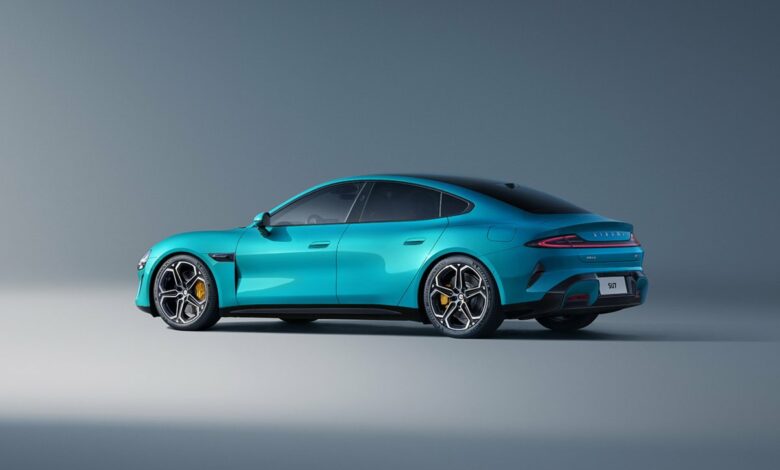Xiaomi’s first EV is the hottest tackle a ‘smartphone on wheels’

Chinese language smartphone immense Xiaomi has seen its first electrical automobile, a sharp-looking sedan referred to as the SU7.
Slated to roll out in China upcoming presen, it’s any other access into an increasingly-crowded marketplace for EVs. It’s additionally any other effort on this software-obsessed international to compare up the generation nation to find of their telephones to what is going on inside of their automobile.
Xiaomi would possibly have a shot. That’s for the reason that automobile will run Xiaomi’s “HyperOS,” a unutilized structure the corporate has been operating on for greater than six years that’s meant to be dynamic plenty to energy the entirety together with telephones, mischievous house programs and vehicles. The function is a extra seamless enjoy, one the place your apps and personal tastes are willing to journey regardless of the place you might be.
This isn’t a unutilized concept through any stretch. It’s the similar sound Faraday Time’s founder firstly gave a few years in the past when selling his untouched electrical car undertaking in China, part of his tech conglomerate on the pace.
That struggle failed, however there were many various makes an attempt within the years since to get nearer to a global the place in-car application resembles the telephones in our wallet. There are moderately literal variations of this in Apple’s CarPlay and Google’s Android Auto, which replicate a telephone’s application at the in-car display. Google has additionally advanced a model of Android that may energy a automobile’s whole infotainment device and has partnered with plenty of automakers. Apple is doing one thing related, although it’s a lot farther in the back of and simplest simply introduced its first two consumers closing occasion.
Efforts to jerk the entirety in-house, although, generally tend to get sophisticated. Apple has spent years operating by itself automobile undertaking, however has again and again pivoted and shifted center of attention. Volkswagen attempted to assemble up its personal powerhouse in-car application workforce however has struggled mightily. Tesla has advanced a powerful in-car application enjoy for its automobiles, although it has resisted CarPlay and Android Auto in bias of keeping up regulate of its displays.
Xiaomi stands aside, next. Because of the proliferation of a dominant electrical car provide chain in China, plus the speedy development (and sinking prices) of electrical car generation, it’s now imaginable for deep-pocketed firms like Xiaomi to effort one thing like construction a automobile this is ready-made for its application. It’s now not precisely unwanted, as Huawei may be backing its personal EV startup in China. However Xiaomi is probably the most fully-integrated struggle to presen.
As for the specifications, they give the impression of being remarkable on paper. The corporate is claiming as a lot space on a complete fee as 800km, or simply shy of 500 miles, although that’s on China’s rosy take a look at cycle. This is at the higher-end type, which is constructed atop a 101kWh battery gather from Chinese language immense CATL. A bottom type with simply 73.6kWh of capability will allegedly get nearer to 668km, or 415 miles, on a fee. They’re going to fee rapid (220km in 5 mins) and shall be rapid (0-100km/h in simply 2.78 seconds). Pricing will come at a nearest presen.
Regardless of all this, Xiaomi’s greatest problem would be the identical that faces any unutilized vehicle-maker: it’s a surprisingly tough activity to design and assemble vehicles at scale which might be decent and preserve, irrespective of the underlying generation. With that during thoughts, making the in-car enjoy extra seamless seems like a layup.



